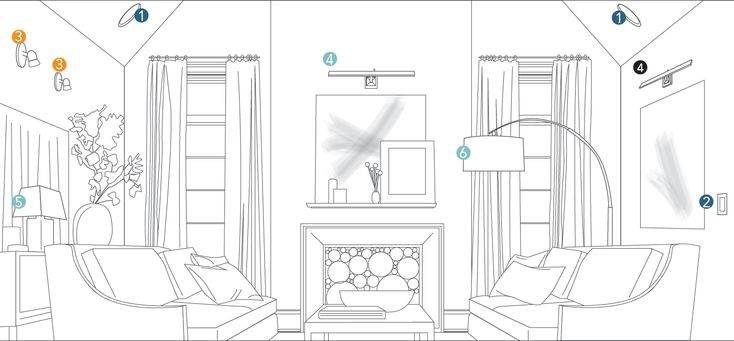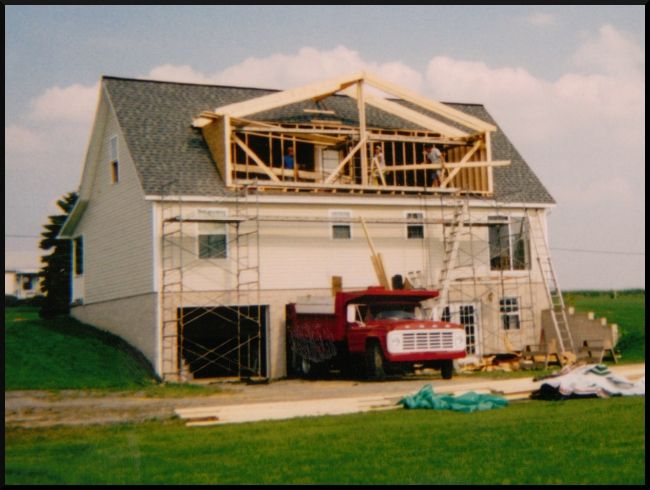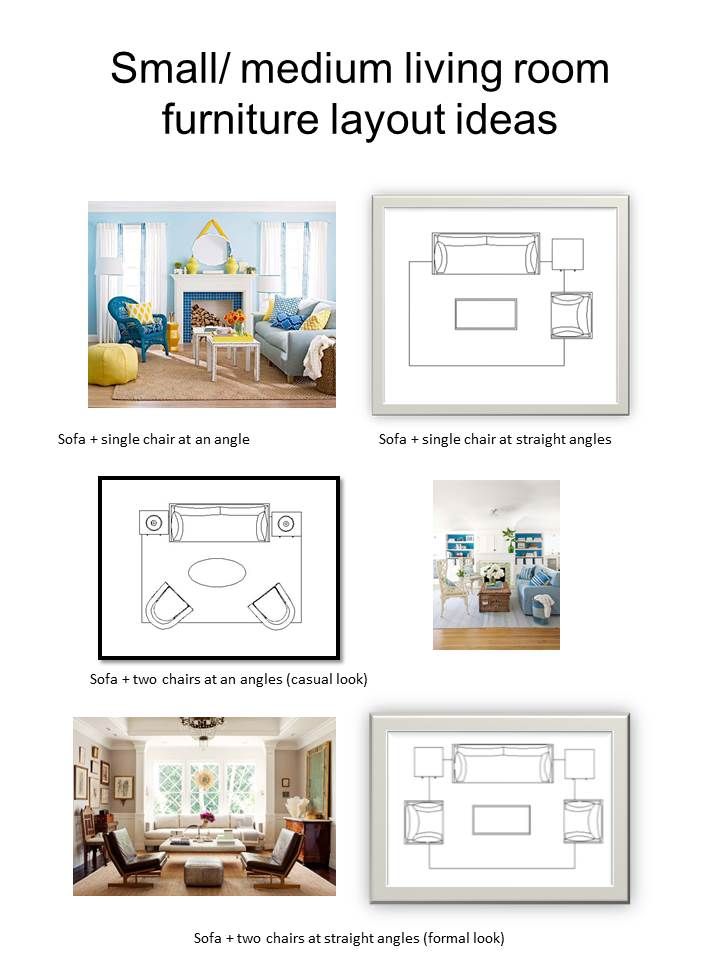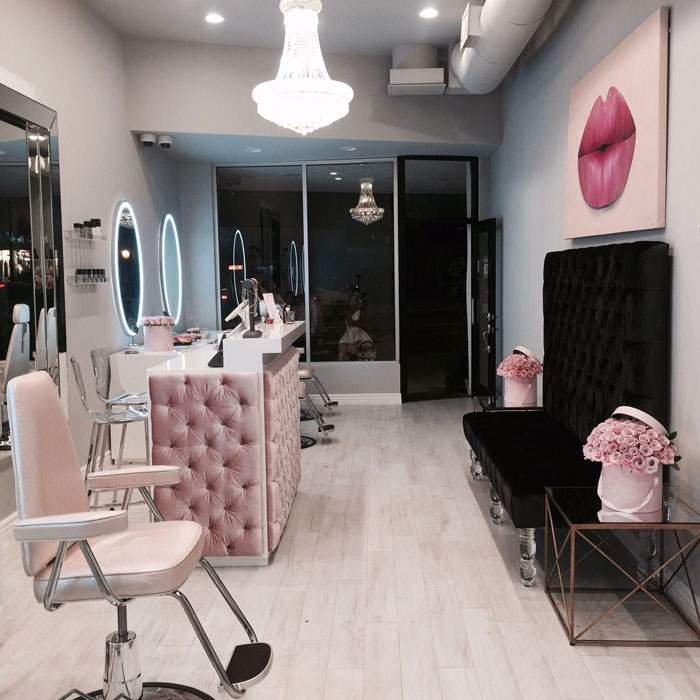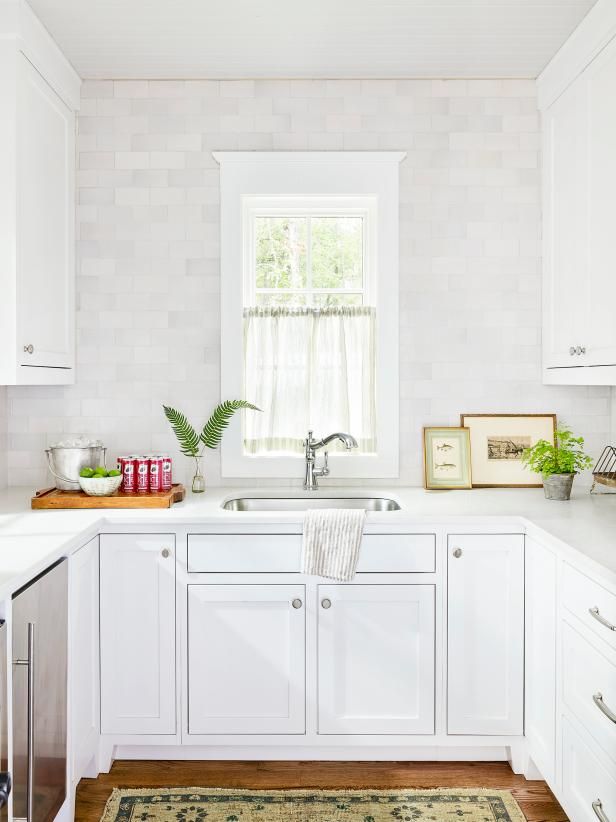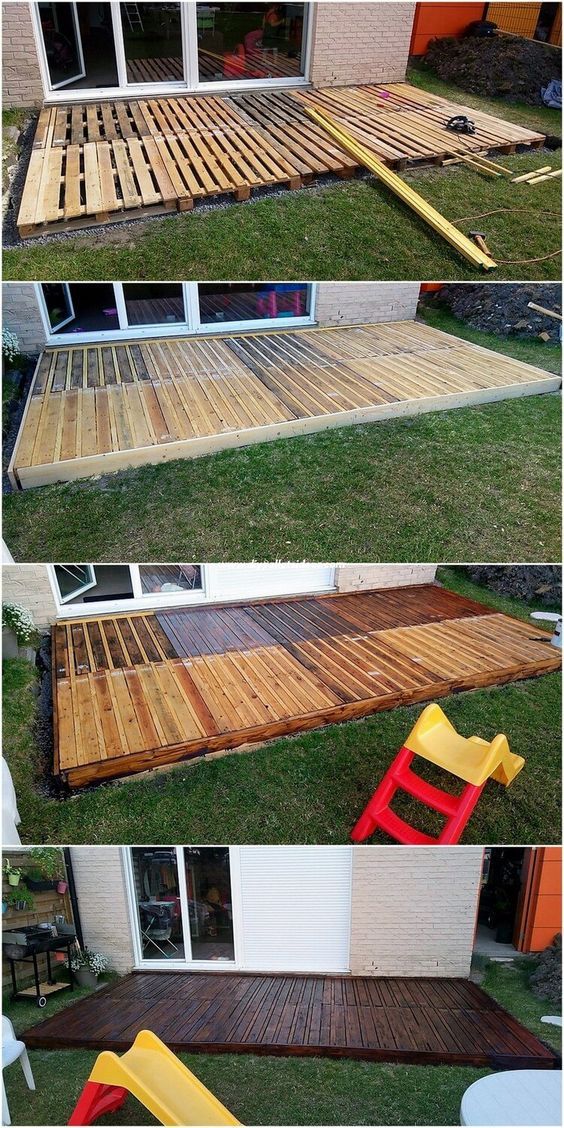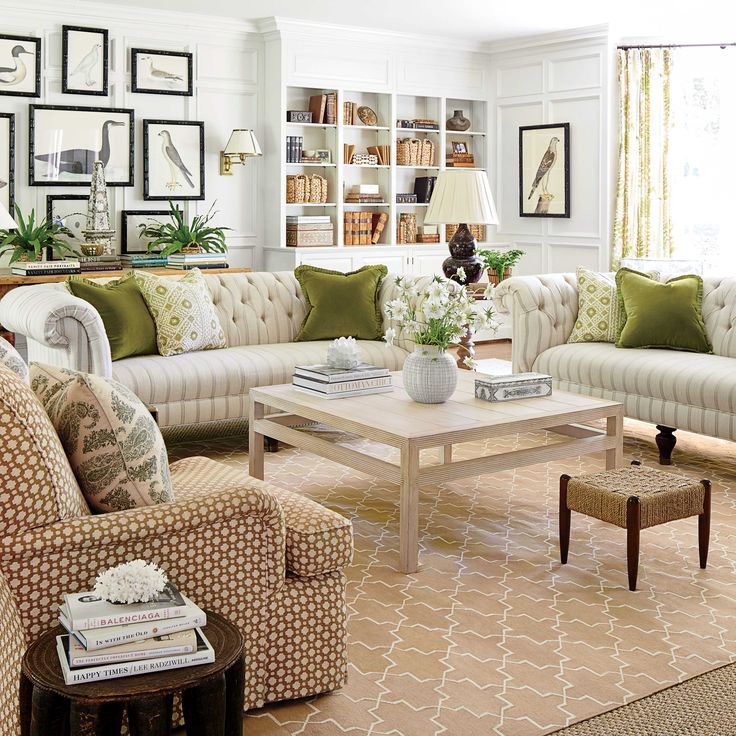How to plan room lighting
10 First Steps to Follow When Planning the Perfect Lighting For Your Home
To avoid feeling overwhelmed before you even begin, follow these 10 steps to designing your home’s lighting like a pro.
1. Establish the budget
It might seem like an obvious step, but it's amazing how quickly home projects—big or small—can put a serious dent in your bank account. To avoid a monetary setback, decide how much lighting you need, and designate the items you might want to splurge on, and other areas where you know you need to be more conscious of cost.
Creatively separating your functional needs is a key component of Good Small Design—it’s all about overlap, nesting, and double duty.
2. Pick a Theme, Genre, or Design Type
Just as you would stick to a color scheme when decorating a space, so should you consider the style and theme of the fixtures you're wishing to install. Since lighting is such an integral component of creating the mood and tone of a space, find products that speak to you and the particular space. If you have a signature style, the lighting should follow suit.
When one thinks of a chandelier, often an elaborate, shimmery fixture comes to mind. With its Industrial Chandelier, Workstead pares this idea down to capture the function of a chandelier—an overhead lighting fixture—with the simplicity of clean lines and a flexible design. The three-arm chandelier can be reconfigured into a variety of shapes, making it an adaptable piece for a many interior spaces. Structured as a horizontal fixture, the Industrial Chandelier can hang just three feet from the ceiling, or as a vertical piece, it can hang five feet for a more dramatic effect. Crafted from steel, repurposed industrial joints, and vintage Hubbell sockets, the lighting fixture has a mechanical, vintage aesthetic, while its minimalist design, exposed cords, and unshaded bulbs have an undeniably modern sensibility.
3. Layer lighting
The basic principle is to layer three types of lighting: ambient, accent and task lighting.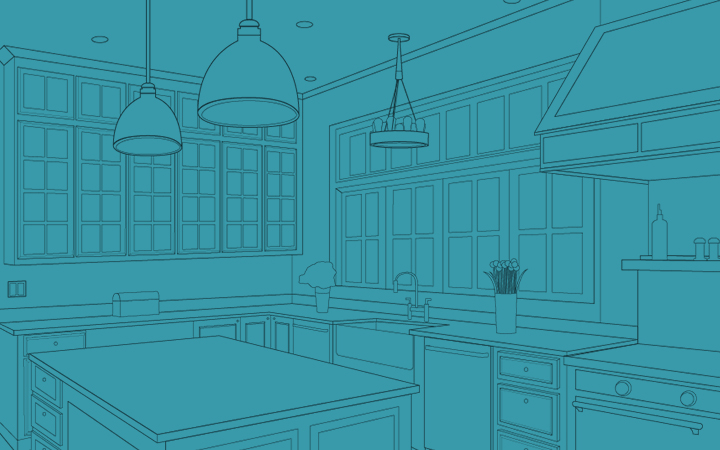 Ambient lighting is concerned with creating general illumination, occupying a more functional role. Accent lighting is often where decorative fixtures come into play, like chandeliers, pendants, and linear lighting. Task lighting also comes in many forms, providing focused lighting for work spaces throughout your home. Once all of these elements come together, the interior becomes a well-rounded (and well-lit) space.
Ambient lighting is concerned with creating general illumination, occupying a more functional role. Accent lighting is often where decorative fixtures come into play, like chandeliers, pendants, and linear lighting. Task lighting also comes in many forms, providing focused lighting for work spaces throughout your home. Once all of these elements come together, the interior becomes a well-rounded (and well-lit) space.
Jaime Hayon and his wife, photographer Nienke Klunder, and their son, Tys, has filled his home with many of his own designs, including the Bardot sofa for Bernhardt Design and the 22 chair for Ceccotti and mint-colored armoire for Bisazza Bagno.
4. Start with the statement light
Once you have a theme in mind, start with the most visible item that will define the space, like a modern chandelier or pendant (this could be one of the splurge-worthy items). From there, choosing the remaining lighting in the same style as that fixture will help narrow the search.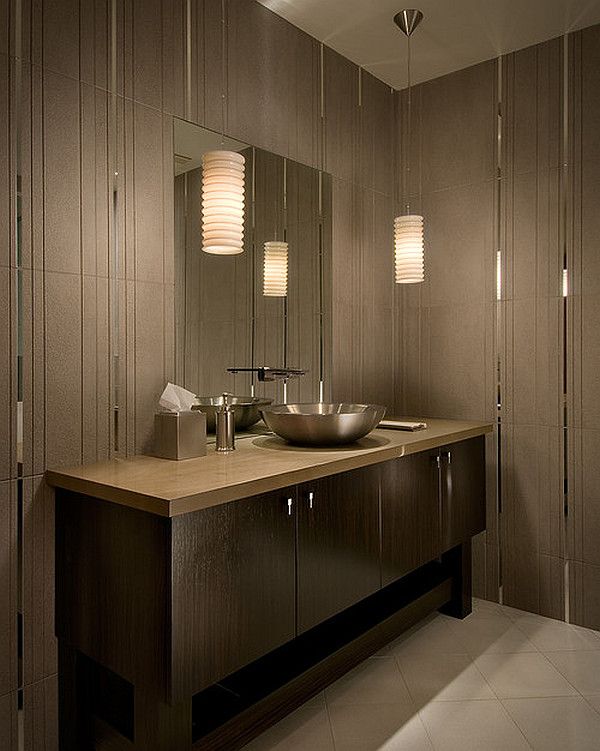
Barbara Hill had the overhead lighting in the kitchen customized by Rich Brilliant Willing in a pert orange that accents the primarily black-and-white interior scheme. She added a stainless steel kitchen island by Bulthaup, its glossiness and "clean feel" tempered by the plastic stacking stools designed by Konstantin Grcic for Magis. The cabinets, appliances, countertops, and marble tile were kept as-is, with the addition of several coats of white paint in order to blend seamlessly with the walls.
5. Consider the requirements of each room
Since each room has its own function, some areas should naturally be more ambient, and others more task-oriented. For example, the bedroom would do well with more accent lighting, since it's a space for relaxation and sleep. The kitchen is the area for careful tasks like food preparation—so that space demands bright, functional lighting before anything else.
In Chicago’s Buena Park, dSPACE Studio transformed a disorganized 1978 home into a bright retreat that revolves around an expanded atrium.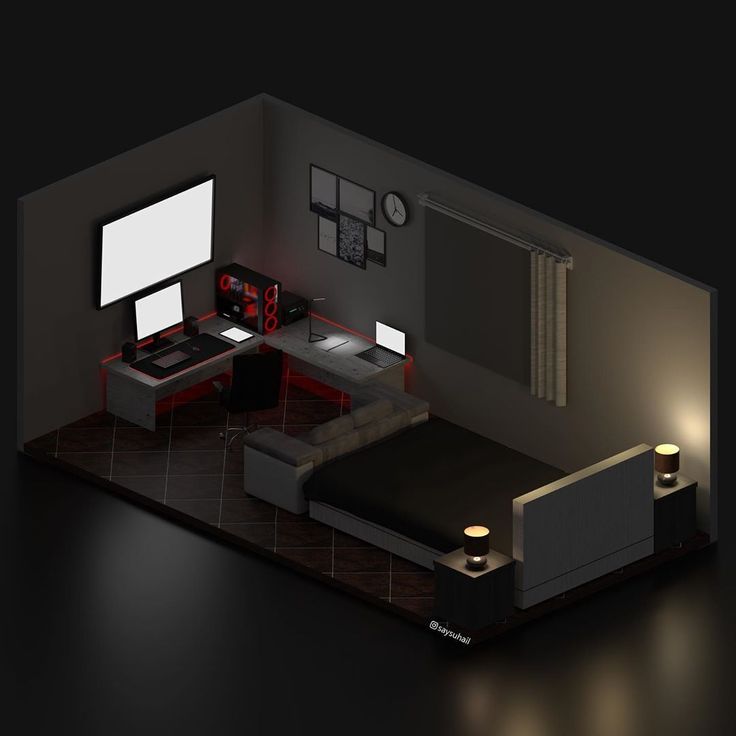 SoCo pendant lights by Tech Lighting draw the eye up to the double-height light well.
SoCo pendant lights by Tech Lighting draw the eye up to the double-height light well.
6. Be precise with measurements
Luckily, there are general and specific guidelines for sizing a fixture for a space. Once you have the basic dimensions of the space and its function, the math for finding the correct sized fixture is easily done. For example, kitchens and living rooms have different requirements; planning the lighting above a kitchen island is very different from choosing a large enough fixture to fill a living room.
Cal and Macy Deam enjoy a snack from Mom at the almost 14-foot-long walnut slab table sourced from Arborica in Marshall, California. The wood came from a tree that fell into a Palo Alto, California, street. A trio of Tom Dixon Beat Lamps provide the perfect counterpoint to a slew of black plastic Eames shell chairs from Herman Miller.
7. Get creative
We've talked about specific types of lighting for each room, but sometimes it's okay to break the rules.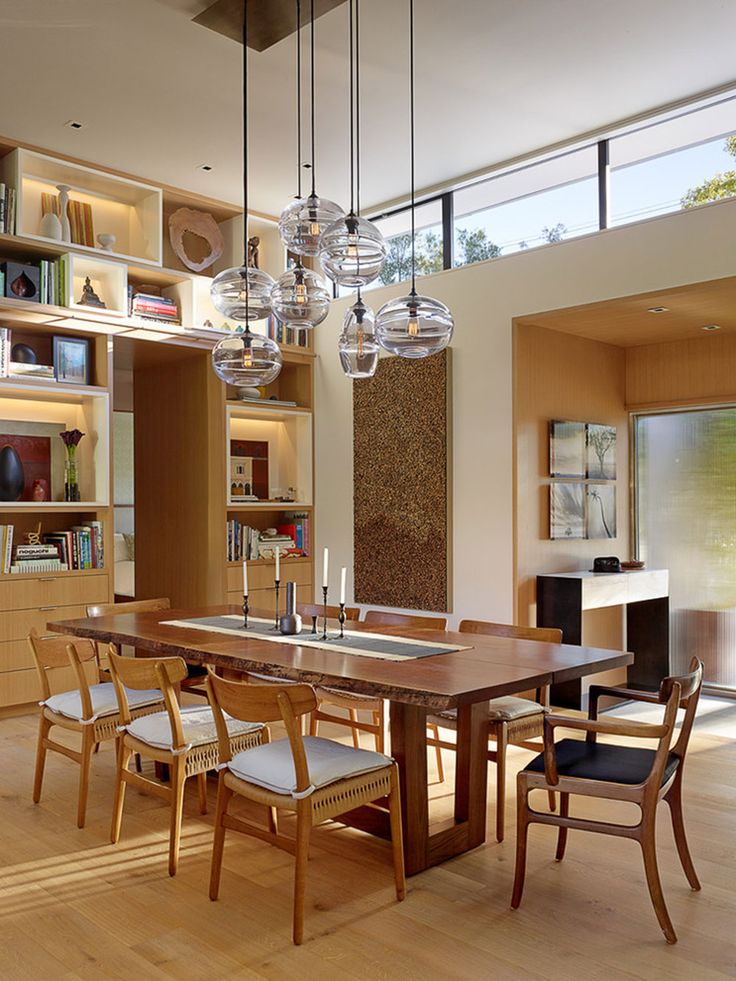 Think outside a product's normal function and try unexpected applications—perhaps a pendant for a bedside lamp or an adjustable wall sconce as a task lamp in the kitchen.
Think outside a product's normal function and try unexpected applications—perhaps a pendant for a bedside lamp or an adjustable wall sconce as a task lamp in the kitchen.
For a simple, low-cost bedside reading light with a dash of industrial style, Bernier ran a standard-issue cord set through a vintage clothesline pulley, which he picked up at a flea market, on Thibault’s side of the bed. "If she ever wants it to be higher, she can easily adjust it," he says.
8. Stay educated about new technology
Let's face it, LED lighting is more common than ever these days, and there are different rules when it comes to installing LED fixtures in your home. With that said, consult your contractor or electrician for the proper voltage and dimming options required for LED fixtures.
The LED lighting in the slide is just one of the high-tech elements in the house that can be adjusted from a smartphone or tablet. A computer system in the basement controls the screens in the house as well as the security and heating systems.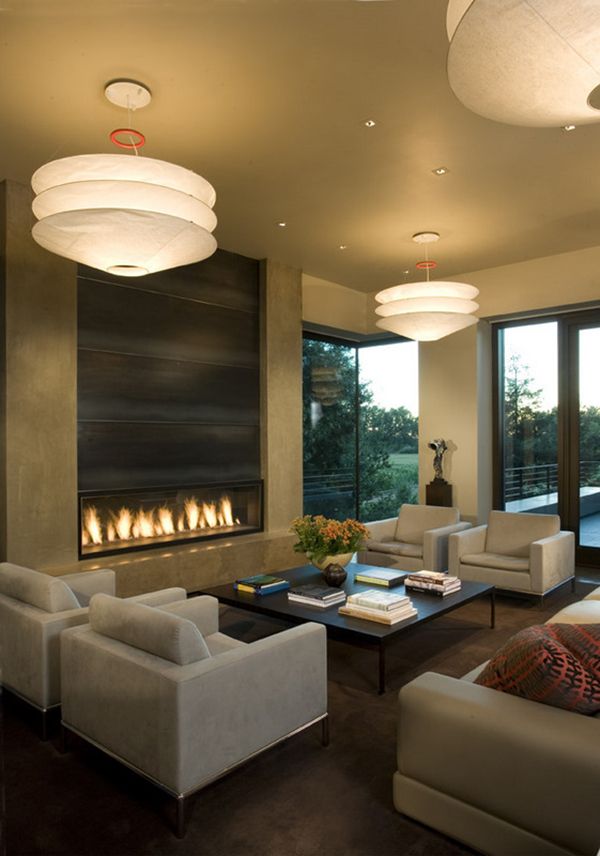
9. Consider multi-functional lights
Now that we have decorative lighting covered, it's time to get down to the nitty gritty and discuss architectural lighting (i.e. recessed, dimmers, controls, and wall plates). Since we live in the digital age, we rely on many devices that require charging. These days, there are many sophisticated wall controls and outlets that allow for efficient energy consumption, that can also power our mobile devices.
An unassuming little helper is how young Danish designer Mads Sætter-Lassen modestly describes his desk lamp, Buddy, designed for Northern Lighting. The multifunctional design includes a holder to keep pens, keys, and other small objects that are easily lost. The flexible shade, available in five matte colors, can be rotated in any direction.
10. Start designing!
The last and final step is to dive right into your home's lighting design. Getting the planning process going is often the hardest part, but with these helpful tips, you'll be installing a unique lighting scheme in no time.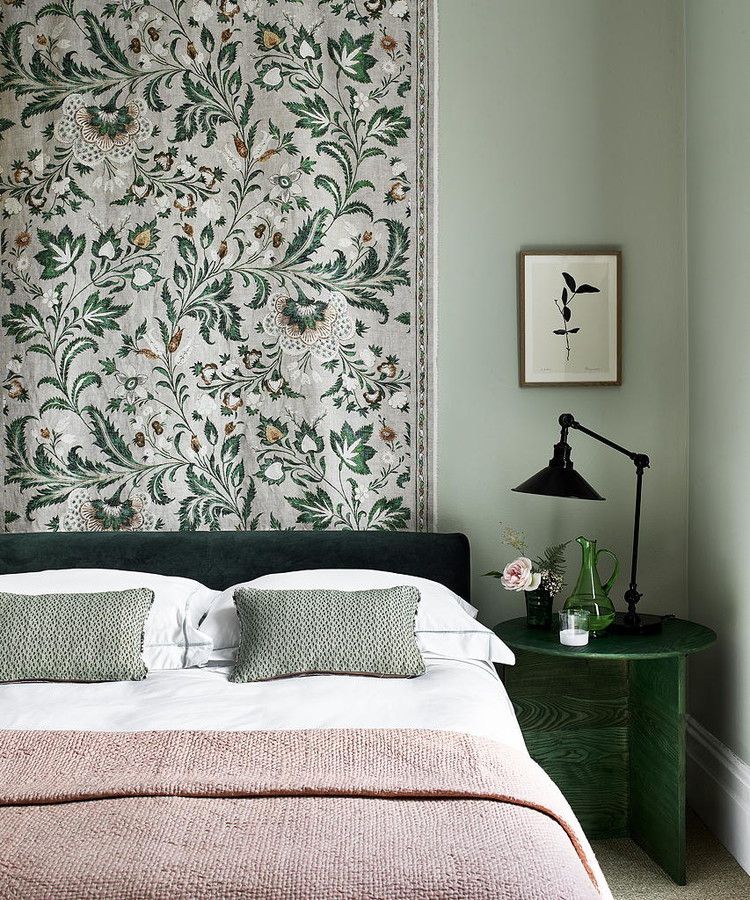
Workstead wall-mounted lamps illuminate a photo from Cloud Series by Matthew Williams. The bench is by Hugh Acton.
Published
How to design a lighting plan for your home l Expert tips
We’re the first to admit that up until a few years ago, we were completely clueless when it came to lighting. Yet the more we learn about design, the more obvious it becomes how important it is to have a well-considered lighting plan. Whether you’re simply renovating a zone of your home, undertaking a new build, or even a larger project, keep on reading for expert tips from Illumination Scientist and owner of Luxygen, James Nagel. He has dedicated his career to lighting and is one of the few people in Australia who comes so highly qualified to talk on the subject.
Related article: What height to hang pendant lights?
Related article: Light locations in a new home? Expert advice on the dos and don’ts
Up until recently we hadn’t heard the term ‘lighting plan’, tell us what these are and why they are so important.
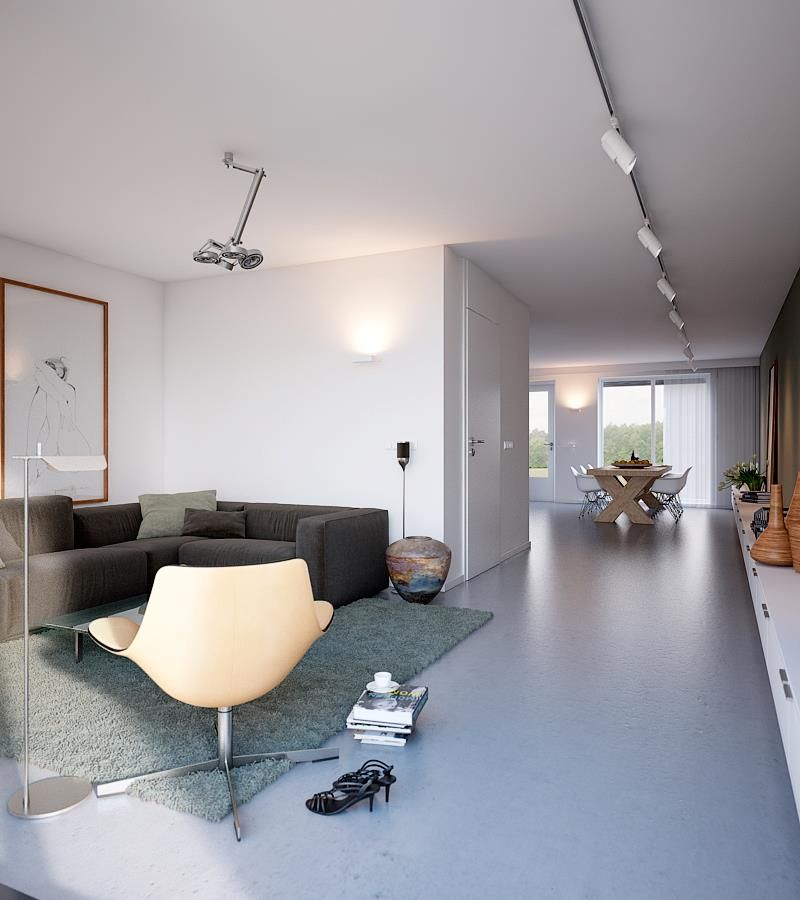
“Quite simply, a lighting plan details what types of lights and how many you will have in each zone. Generally, I’ll work from a floor plan to specify what lighting would be placed where.
The important objective in creating a good lighting plan for your home is understanding the function of each room. This way you can consider tasks performed in a space and provide functional and creative lighting.
“There are three basic layers of lighting — task, ambient and accent — and each type meets a particular need,” says James.
Can you explain more about that?
“I always start with task lighting, which means considering spaces that require specific functional lighting, some examples might include above a kitchen bench, at face level at the bathroom mirror, over desks surfaces or reading areas, and in cupboards.
“Then I consider ambient lighting, which is the overall illumination of an area. It should create visual comfort. Consider lighting ceilings and walls, a softly illuminated wall can often be a better approach than a bunch of downlights in a room.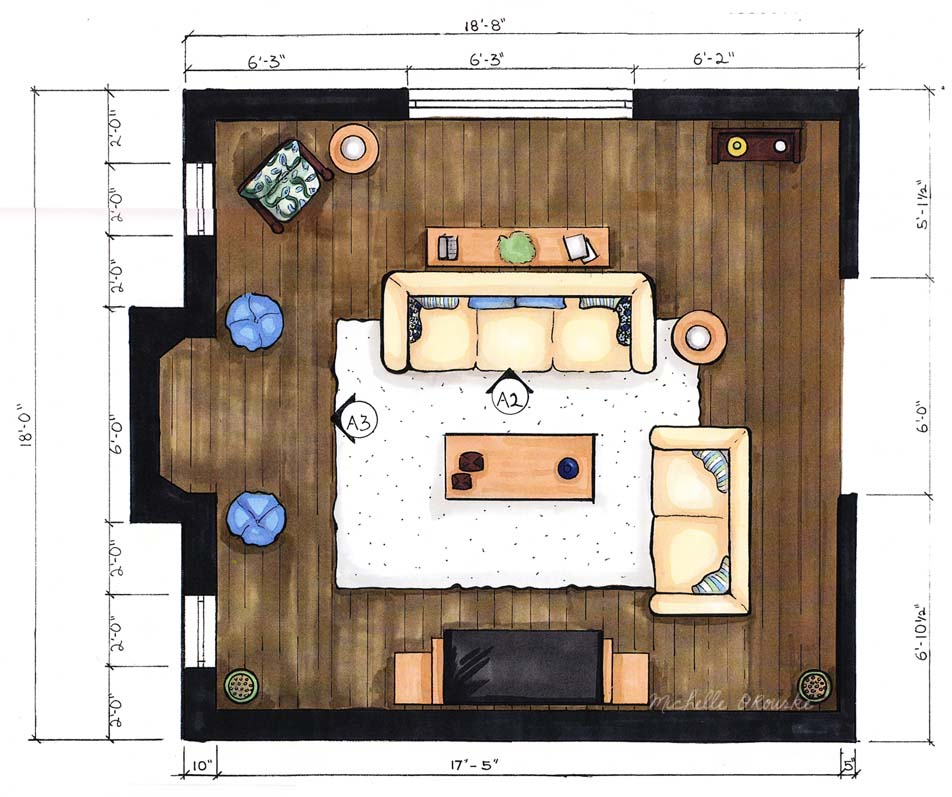
“The use of uplighting on a clean ceiling allowing the light to reflect is probably the best way in my view of achieving ambient lighting. For example, a pendant over a kitchen bench with both direct and indirect lighting would achieve both.
The final layer of lighting is accent, which adds creativity to a room.
“It draws the eye to the visual statements and allows you to get creative. Some examples might be highlighting a painting or a textured wall, or adding some colour such as lighting a tree with green light.”
Three types of lighting used in this bathroom by MINOSA via HouzzWhat are the biggest mistakes you see when it comes to residential lighting?
“Generally when people build a house, they run out of money by the time it comes to lighting and landscaping.
Many people end up just filling their houses with downlights. I guess it works, but it’s not very creative — you generally have over-lit spaces and not a lot of visual interest.

“Often people don’t consider the space well enough before they select their lights. Understanding the function of the room is important. Placement of furniture and even reflections from surfaces like mirrors should also be considered. And too often we use too much artificial light.”
Sleek and contemporary lighting at Concord residence, see the full home tour1. Draw a floor plan
James says the first step is to draw a floor plan of the area you will be lighting. Make it to scale and include detailed information like window and door positioning, and furniture placement.
This way you’ll have a true sense of the area you’re working with and can more easily determine where your lighting should be positioned and how many to include. For example, you don’t need the same spread of downlight across your full living room, rather you may like to have 2-4 above your sofa (depending on its size) so you can illuminate the area you will be sitting and use less elsewhere.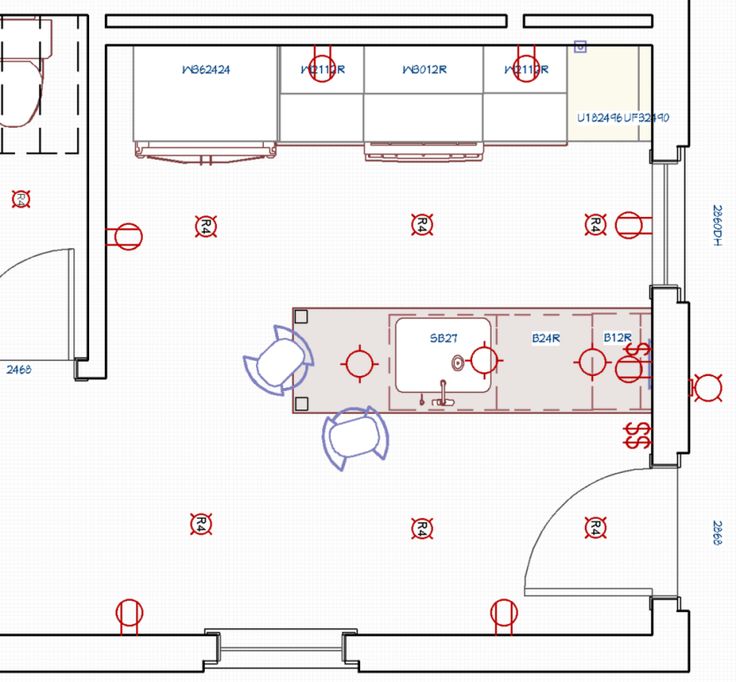 Similarly, on walls where you know you will hang artwork, you can use two wall washers (set closer to the wall) to illuminate artwork.
Similarly, on walls where you know you will hang artwork, you can use two wall washers (set closer to the wall) to illuminate artwork.
2. Think about the tasks
Before deciding on any type of lighting, you need to first ask yourself ‘What will you be using the space for?’. Lighting is first and foremost functional and you need to understand how you will use a space before deciding how much and what type of lighting you will need. You might like to mark a small x over the areas you need task lighting.
3. Add ambience and accent lighting
Once functional lighting has been locked in, you can get onto the fun part of adding ambient and accent lighting. Think pendant lights, decorative wall lights, LED track lighting, up lights, wall washers, table and floor lamps. Consider all lighting surfaces like walls and the ceiling. At this stage you’re still just designing where you want light.
4. Define a budget
The cost of lighting can vary A LOT! As soon as you look beyond mass-produced lighting, you can start adding zeros to the end of the amount you think it should cost.
Don’t be disheartened though, it’s still possible to achieve a fabulous result with various budgets. Our tip is to create a mood board for your space or new home build, and get clear on the look you want to achieve. This will help you to identify the style of lighting that would suit and then the researching can begin! You can find save vs splurge versions of most lights on the market to achieve the look you want within your budget.
5. Select luminaires (aka light fittings)
Once you know the type of lighting you need and how many, and what your budget is, you can now get onto the fun part of selecting the light fittings! While the temptation is to often make a statement with lighting, James reminds us that “It’s not always the luminaire that should be the standout element of the space”.
There you have it! There’s more to lighting than just deciding how many downlights to put in each room.
While it’s often forgotten about, lighting can have a profound effect on the look and feel of a home.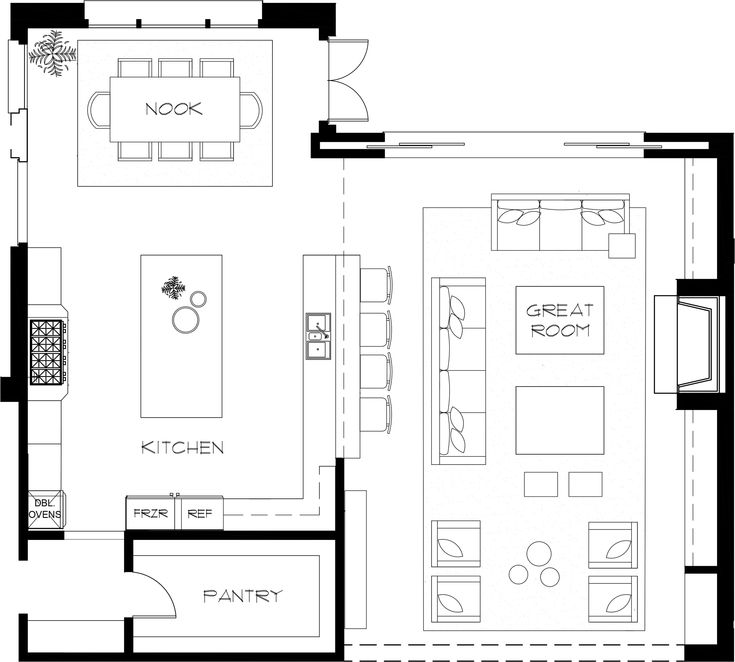 Hopefully these practical tips are helpful when you build or renovate your home. Do you have more lighting tips? Share them below!
Hopefully these practical tips are helpful when you build or renovate your home. Do you have more lighting tips? Share them below!
Check out more lighting articles
This article was first published in May 2015 and has been updated with new information and images.
How to plan lighting in the apartment so that it is pleasant to relax and work comfortably
August 31, 2020LifeColumn
Think over scenarios for using the room and take into account important nuances.
Share
0Tatyana Vasilyeva
Interior designer at Masters Remont.
Light helps to concentrate or relax. It emphasizes the finish and corrects the shortcomings of the room: low ceiling, small size, irregular shape. To make the interior beautiful and comfortable, lighting should be taken very seriously. And it is important to decide on the location of the lamps before the start of the repair: alterations will be expensive.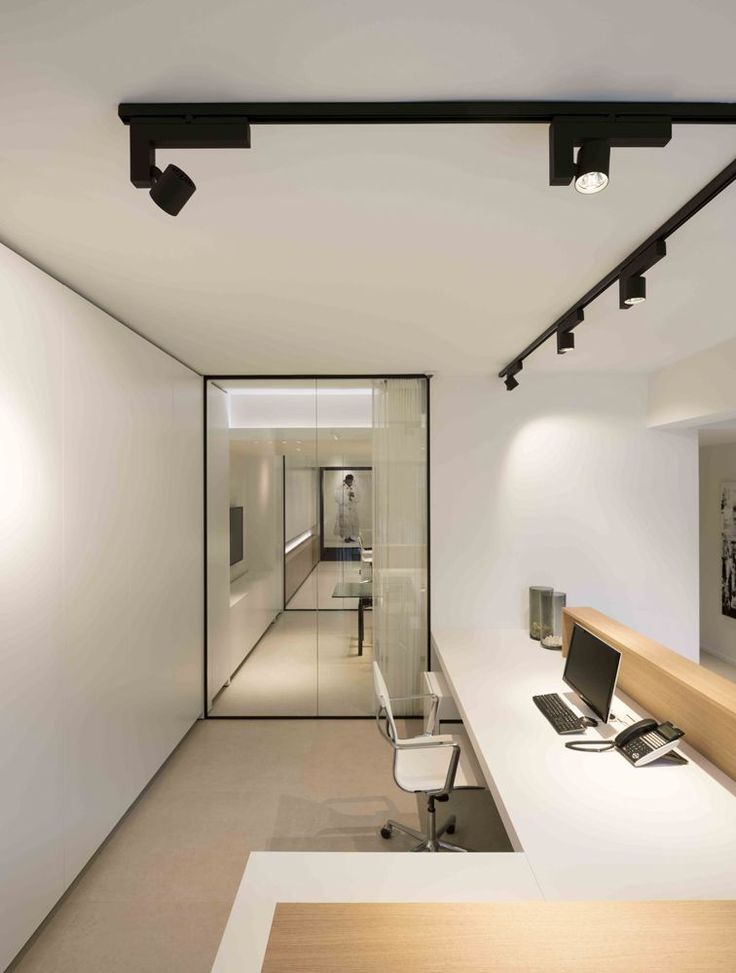 Here's what to consider.
Here's what to consider.
Types of lighting
It can be general, directional and decorative.
- General is useful to compensate for the lack of natural light - for example, if you need to brightly light up the room in the evening. In this capacity, a chandelier in the center of the ceiling or a grid of built-in lights can act.
- Directional lighting is also called working. This category includes table lamps, floor lamps, pendant lamps. It is needed to illuminate a small area: a dining table, a workplace, a mirror.
- Decorative sets the accent in the interior. This includes the illumination of paintings and niches, built-in lamps in the floor and along the walls. If a luminaire casts complex shadows, accentuates a finish or decor, and does not perform a practical function, it is decorative.
Usually all kinds of lighting are used in the interior. In some rooms, you can get by with one or two options: the bedroom will be comfortable without a chandelier, and the toilet is unlikely to need complex lighting or a floor lamp.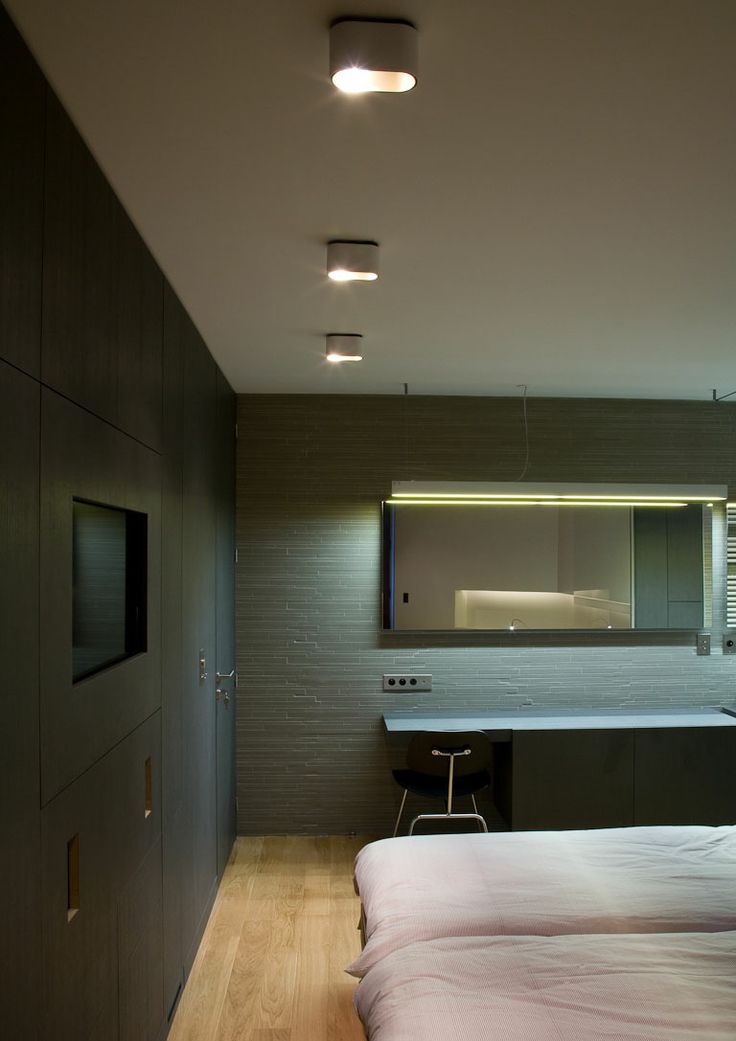 The purpose and number of fixtures depends on how the room is used.
The purpose and number of fixtures depends on how the room is used.
Lighting scenarios
Luminaires are selected and positioned according to how the room will be used. There are no universal solutions. Scenarios depend on the functional areas, lifestyle and requirements of the apartment owners.
- In the living room people usually relax, watch TV, read. As a rule, bright general light is not needed here: it invigorates, not relaxes. But still, the lighting should be solemn: holidays are celebrated in this room, guests are received. Therefore, it is usually decorated more elegantly than other rooms. Soft general lighting will provide built-in or pendant lights. Decorative is also needed: it will decorate the interior and create the necessary mood.
- In bedroom they relax, read, watch TV, change clothes. This is an intimate part of the apartment, comfort and harmony in the interior are important here. You can place dim lamps by the bed, spots or spotlights - by the closet, highlight the mirrors.
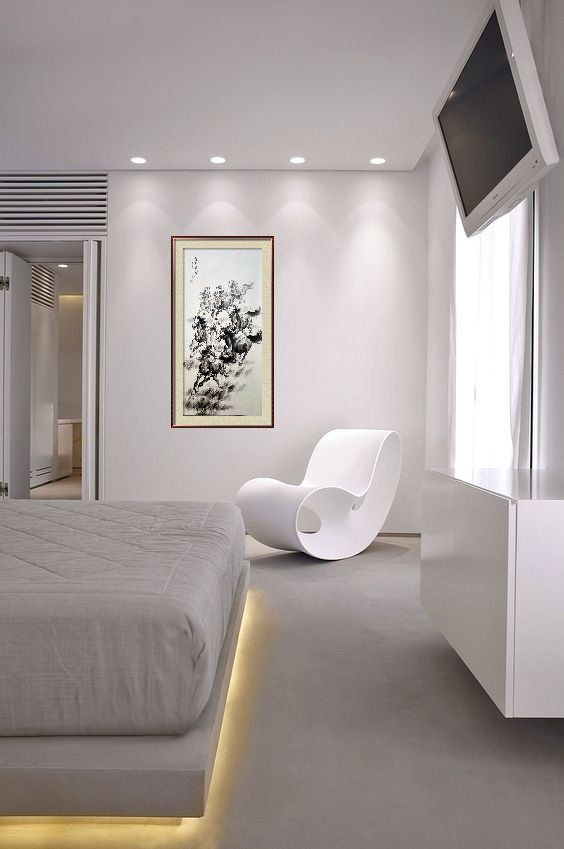 A bright general light helps wake you up in the morning, so it's worth adding that too. Decorative lighting - optional.
A bright general light helps wake you up in the morning, so it's worth adding that too. Decorative lighting - optional. - Nursery should have plenty of light. Be sure to need general lighting, working - in areas for recreation, study and games. Decorative - optional: garlands and nightlights will make the room cozier.
- Kitchen illuminates the worktop and dining area. General lighting is optional, especially if the kitchen is small: built-in lights along the furniture, lighting above the countertop and a pendant or wall lamp above the table are enough.
- The hallway should be brightly lit: there are rarely windows, so you need to compensate for the lack of sunlight. Built-in lamps are chosen as general lighting. They can be supplemented with a chandelier in the center of the ceiling if the room is large. Working lighting is also needed: sconces or lamps near the mirror, cabinet lighting.
- Bathroom needs general and directional lighting (near the mirror).
 Sometimes built-in shelving is illuminated for beauty.
Sometimes built-in shelving is illuminated for beauty. - Toilet only needs general lighting. Directional is unlikely to come in handy, decorative - optional.
Thoughtful scenarios help determine the number and location of luminaires. They are marked on the plan of the future interior immediately after the furniture: so each light bulb will find its place.
Consider lighting scenarios using the example of a studio apartment. There is only one room here, but it is divided into zones: a bedroom, a living room, a kitchen, a dining room, an office. The apartment also has a dressing room, an entrance hall and a bathroom.
The role of general lighting went to the track structure on the ceiling in the center of the room. Luminaires can be directed to where more light is needed - for example, to the workplace.
Track lighting around the perimeter and a pendant lamp behind the sofa / Project author: Tatyana Vasilyeva Each zone has directional lighting: in the kitchen - lighting above the countertop, in the bedroom - sconces, above the dining table and sofa - pendant lamps, at the desktop - floor lamp .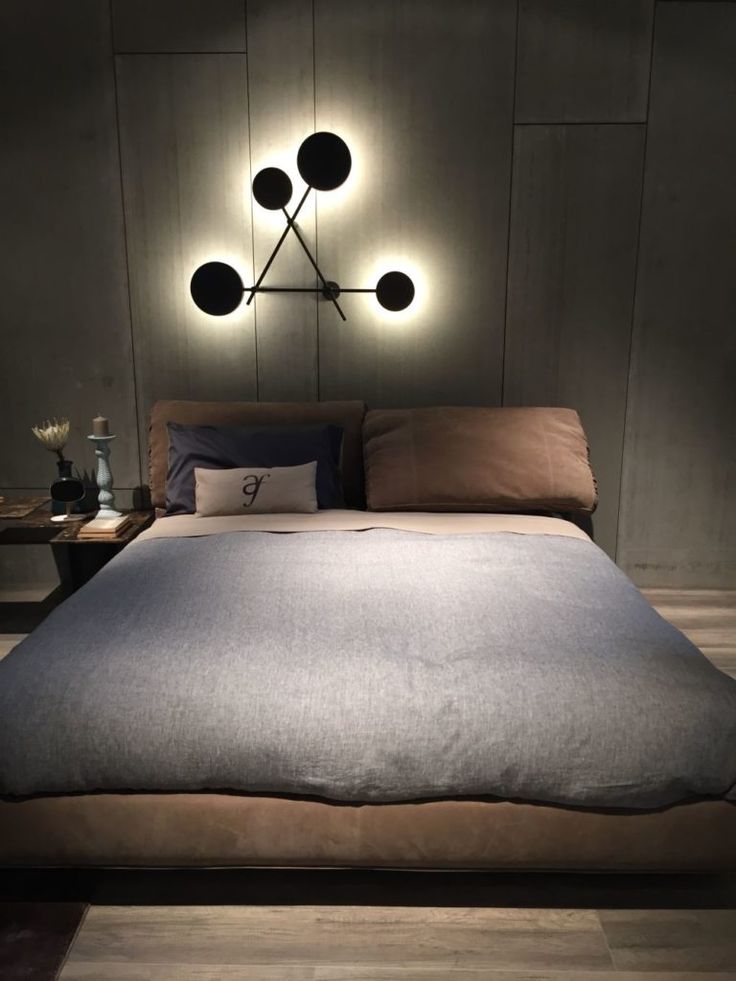 They are included as needed.
They are included as needed.
Decorative lamps were provided near the bed. They provide soft subdued lighting. Great for watching TV before bed.
It was decided to place sconces and decorative lighting in the bedroom area / Project author: Tatyana VasilyevaOnly general lighting was left in the hallway and dressing room. These are small rooms where you do not need too much light. In the bathroom, we decided to assemble a multi-level ceiling and build lamps into it. Provided a mirror with built-in lighting.
Three-level ceiling in the bathroom / Project author: Tatyana Vasilyeva It turns out that for every action of the apartment owners there is a lighting scenario: you can read in bed, dine by the cozy light of a lamp, comfortably watch TV, apply makeup or shave in front of the mirror in the bathroom. Work areas are well lit to make them comfortable to use. The light is adjusted according to the mood: bright - for receiving guests, muffled - for a relaxing atmosphere.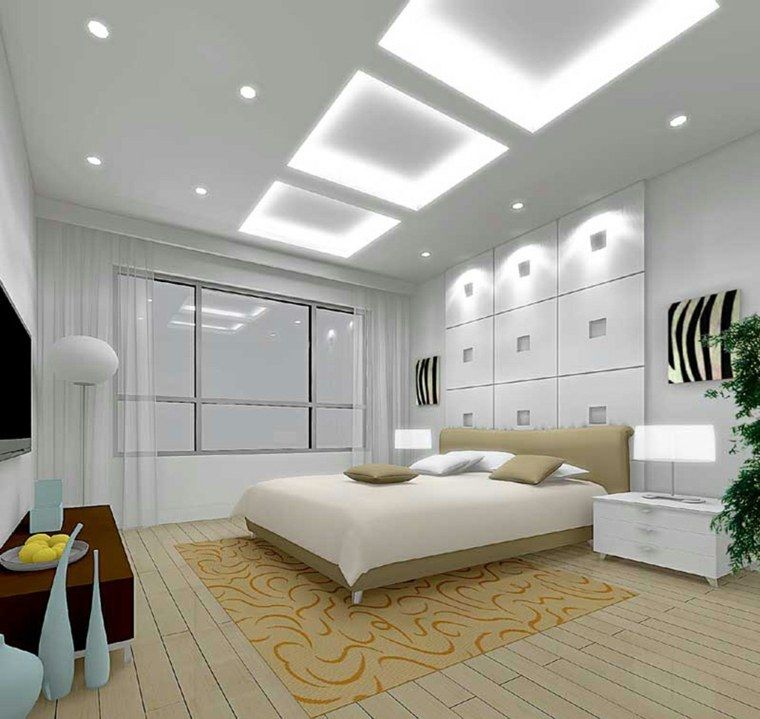
Points to consider
We decided on the scenarios, looked after the chandeliers and lamps - more than half of the work was done. It remains to consider the details.
1. Color temperature of light
Most interiors use lamps that produce white light. It can be warm, neutral or cold. The color temperature of the light sets the mood in the room.
It is measured in degrees Kelvin (K). Warm white - below 3,500 K, neutral white - 3,500-5,300 K, cold - above 5,300 K. The color temperature of the light bulb is written on the package.
Neutral white light is suitable for the working area in the kitchen / Project author: Tatyana VasilyevaWarm white makes the room more comfortable. It is suitable for living room and bedroom. Neutral light is used in the hallway, kitchen, for general lighting of the nursery. Cold white is a rarity in apartments, it is more often used in offices. At home, it is only suitable for a work lamp.
It is desirable that the color temperature of all the lamps in the room is the same: then the lighting is even.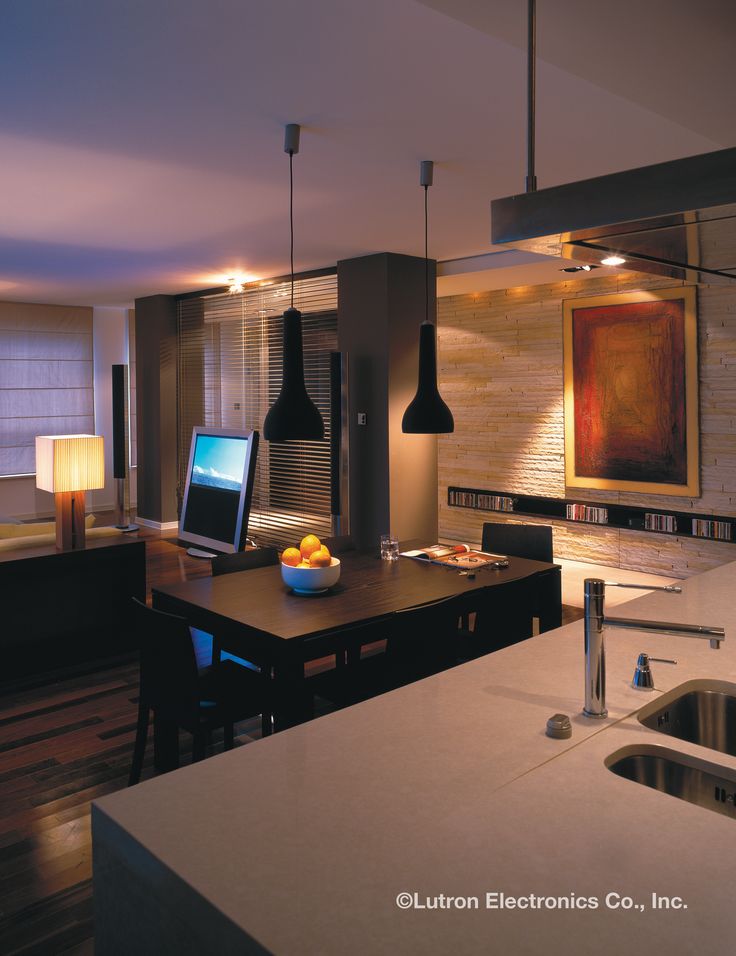 But this is not necessary: the lighting temperature can be selected based on the purpose of the lamp. Or emphasize the texture of the surface, the design idea.
But this is not necessary: the lighting temperature can be selected based on the purpose of the lamp. Or emphasize the texture of the surface, the design idea.
2. Color reproduction of lamps
Sometimes lighting can visually change the colors of furniture and finishes. To choose bulbs that will not distort colors, they are guided by the Ra color rendering index: it must be above 90. Lamps with Ra equal to 100 do not distort colors at all.
The lamp almost does not distort the color of the wall / Photo: keresi72/Pixabay3. Illumination
Bulbs for lamps should be bought so that there is enough light in the rooms. When I order lamps, I ask the store to make a calculation and recommend lamps for them. Usually this service is provided to customers free of charge.
Bright bedroom / Project author: Tatyana Vasilyeva If you don't want to go to the store, you can use programs for calculating illumination - for example, a calculator from the Lighting Technologies company or the DIALux application.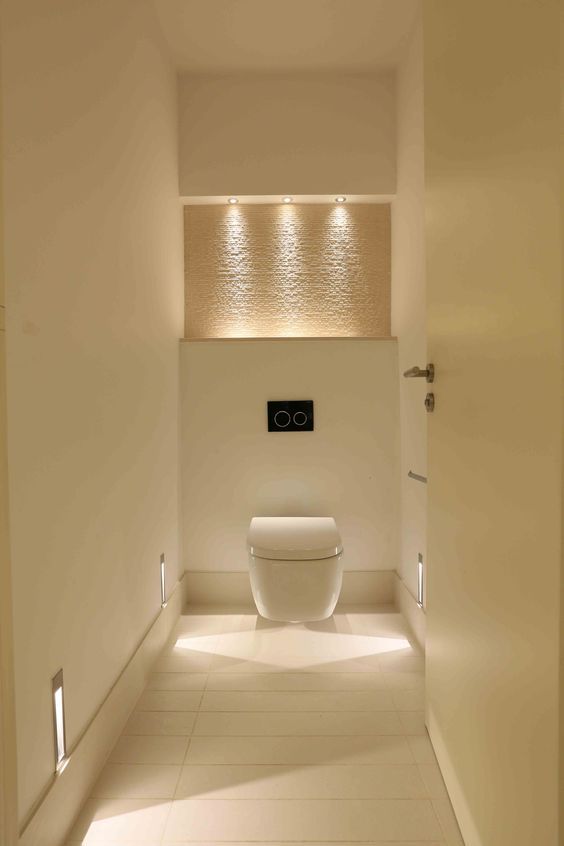 They take into account several parameters, so the result is more accurate than with simplified manual calculations.
They take into account several parameters, so the result is more accurate than with simplified manual calculations.
Download
Price: Free
Download
Price: Free
0087
Luminaires are not placed at eye level or directly above the bed, otherwise they will blind. Thoughtful lighting does not draw attention to itself: the light source should not be too noticeable. If you need it to emphasize the shape, color, texture, or become the king of the interior on a holiday, two modes are provided: bright solemn and calm everyday.
Pendant lamps in the bedroom are located above eye level and to the side of the beds / Project author: Tatyana Vasilyeva5. Additional sockets and switches
Some lamps require sockets - they are marked on the plan. It is better to immediately provide 2-3, they are not superfluous.
Switches near the bed / Photo: Pexels/Pixabay It's good to have lights on and off in multiple places. General light switches in the bedroom are placed at the door and next to the bed; in the living room, a switch is added near the sofa.
General light switches in the bedroom are placed at the door and next to the bed; in the living room, a switch is added near the sofa.
6. Shadows
Sharp shadows are a spectacular design technique: they emphasize the texture of the finish and interesting details. But directional and general light should not create them, otherwise the impression of the room will be unpleasant. For example, a lamp above a bathroom mirror will visually age a person by several years, so it is better to replace it with sconces on the sides or buy a mirror with soft lighting around the edge.
Lighting in the dining room is even, without harsh shadows / Project author: Tatyana Vasilyeva7. Decorative lighting in the floor and window sills
It is no more difficult to install light bulbs in the floor or window sill than in the ceiling, and the interior will become more voluminous and interesting. Decorative lighting should not be neglected: this is the case when a couple of details are enough to make the room “play”.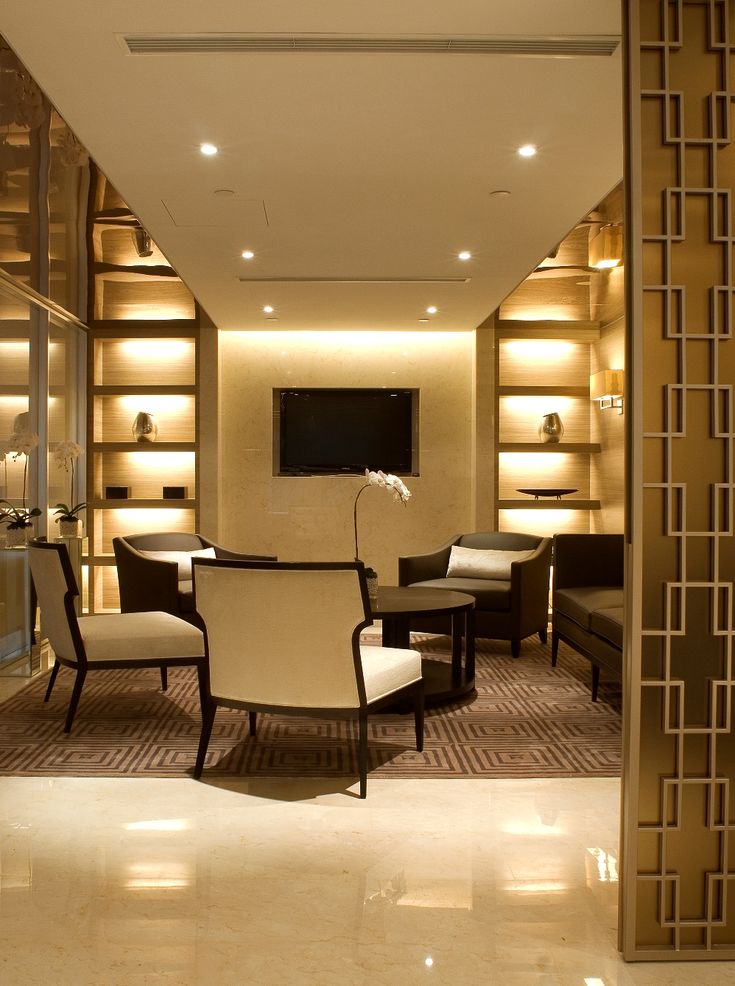
Conclusions
Lighting in the apartment is planned when the arrangement of furniture, finishing and decor has already been decided. But you still have to arrange the lamps, switches and sockets in the drawing before the repair: the wiring is mounted during the rough finish. If you want to place a wall lamp or lighting in a room where you have already pasted wallpaper and installed a stretch ceiling, it will be expensive.
Lighting is planned in five stages:
- Determined with scenarios. They depend on how the premises will be used.
- Select the type and position of the luminaires.
- Consider the placement of sockets and switches.
- Transfer lights, sockets and switches to the plan.
- The plan is given to the foreman before starting work. Perhaps he will give a couple of tips based on his experience. Listen or not, it's up to you.
It is possible to properly plan lighting in an apartment without the help of a designer.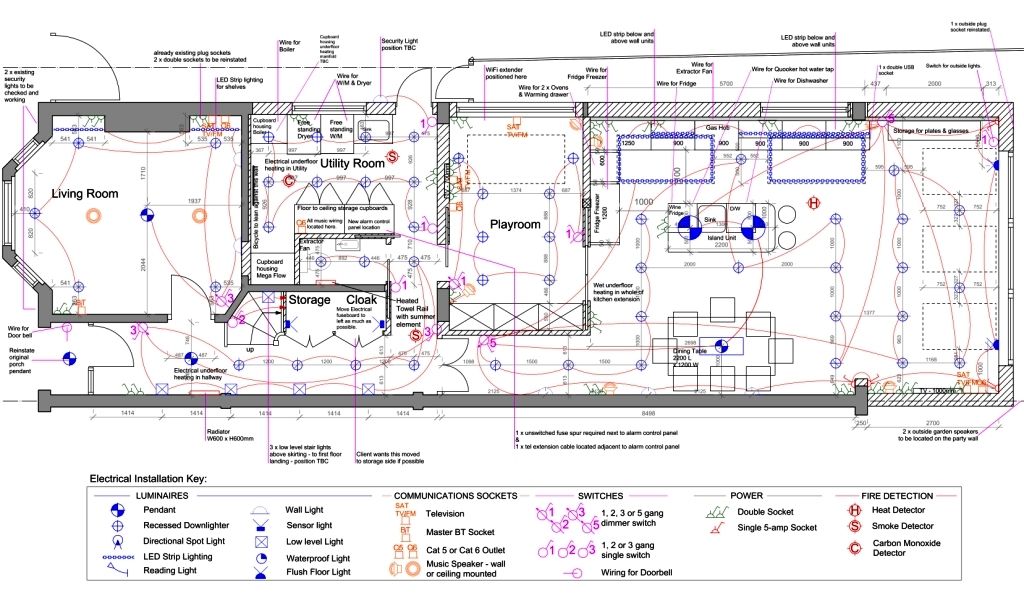 True, it will take time and effort. If you need a complex solution, it is better to contact a specialist: he will offer non-standard options and think over the lighting to the smallest detail.
True, it will take time and effort. If you need a complex solution, it is better to contact a specialist: he will offer non-standard options and think over the lighting to the smallest detail.
Read also 🧐
- 8 cool ideas on how to transform the interior of the living room without renovation
- 12 ways to transform the interior of the bedroom without renovation
- 15 easy ways to make an unusual lamp with your own hands
Interior lighting: 7 rules of lighting design
Lighting plays a key role in the interior. It depends on him whether it is comfortable to be in the room, how colors and textures are perceived, whether the space seems more spacious or, conversely, cramped. This article has collected the main universal rules that are suitable for creating lighting design in a city apartment or a country house. Take note!
Everything about lighting design
General rules
Light planning
— Upper
- Local
— Decorative
When planning the lighting in the interior, remember a few key rules — they will help you not to make a mistake and not to correct unsuccessful lighting scenarios later.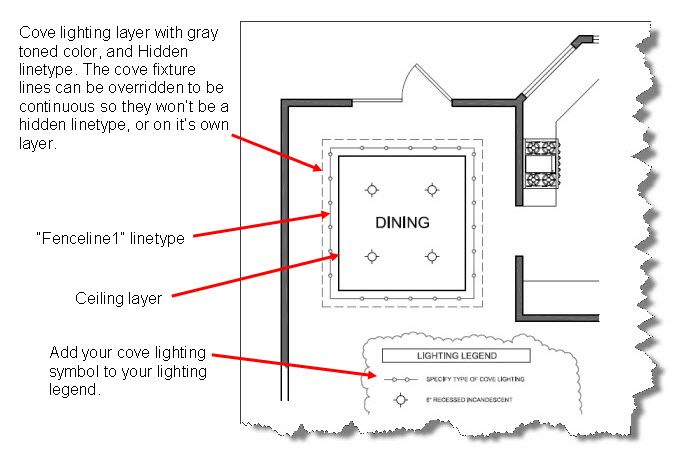
Listed the basic rules in a short video
1. Multi-level
One ceiling lamp is not enough for high-quality lighting of the room - except perhaps for a tiny hallway with an area of 1-2 squares. Even in a small bathroom, you will need at least two sources: the top and the mirror. Determine the number and location of lamps based on life scenarios in a particular room. It is important that the light sources are located at different heights, and the lamps are of different power - so you can adjust the intensity of the backlight and illuminate only the part of the room that you want.
Remember that the lower the luminaire is placed, the more intimate the light appears. Accordingly, to create a romantic or relaxed atmosphere in the bedroom and in the living room, a ceiling lamp alone is definitely not enough.
Design: Olga Lavrova. Photo: Svetlana Okulova. Style: Kristina Pleer
Social networks of Enjoy Home studio
Social networks of designer Alexey Volkov
Social networks of designer Alexei Volkov
Design: Olga Lavrova. Photo: Svetlana Okulova. Style: Christina Player
Photo: Svetlana Okulova. Style: Christina Player
2. Planning first
Planning a lighting design before the arrangement of the furniture in the room is thought out is fundamentally the wrong approach. First you need to draw up a design project and understand exactly where and what will be located. After that, analyze the result: which zones are well lit from the window, and which ones, on the contrary, need additional illumination? Where will you cook, eat, read, work, do hobbies? Are there large objects in the room that block the light (for example, a closet or a high partition)? Based on this, you will understand where and which lamps will be located, and you will be able to accurately plan the electrical circuit.
6photo
Social networks of designer Yulia Pisareva
Social networks of Enjoy Home studio
Social networks of designer Zhenya Zhdanova
Social networks of designer Pavel Alekseev
Social networks of Projection Design studio
Social networks of designer Anna Maltseva
3
Lighting
11 places in the apartment where you need to hang a lamp
3.
 Power, hue, color rendering index
Power, hue, color rendering index These characteristics are the "three pillars" on which high-quality and comfortable lighting rests.
- Power (or intensity) - is responsible for how bright the glow will be. Choose bulbs based on tasks: more powerful for overhead light, muted for local and decorative. And if you want to adjust the intensity within one lighting device, install a dimmer - the device is connected to the outlet and allows you to change the brightness of the lamps.
- The color of the light flux - can be cold, neutral and warm, measured in Kelvin. The feeling of being in the room depends on the shade: it can invigorate and, conversely, relax, add comfort or make the atmosphere more catchy. Different options are suitable for different rooms, but in general, a neutral tone is considered optimal.
- Color rendering index (denoted by the letters Ra or CRI) - this indicator affects how accurately we will perceive colors in the interior. Distortion of shades can "kill" a carefully chosen palette and the entire design as a whole.
 The optimal indicator is 100 - such light will be close to natural daylight. Look for bulbs with a Ra/CRI of at least 70.
The optimal indicator is 100 - such light will be close to natural daylight. Look for bulbs with a Ra/CRI of at least 70.
Social networks of designer Alexey Volkov
Social networks of Projection Design studio
Social networks of designer Alexei Volkov
Social networks of designer Yulia Pisareva
It can radically differ from your expectations, so be sure to pay attention to this when choosing bulbs and shades. Moreover, this rule works both ways: it is important not only to find a sufficiently powerful device, but also, for example, not to overpay for a model with a large glow radius if you are looking for a light bulb for a pantry or a micro-bathroom.
Social networks of designer Yulia Pisareva
Social networks of Alvhem company
Design: Alesya Kotova. Photo: Evgeny Gnesin. Style: Anastasia Vlasova
Design: Anastasia Snitsarenko. Photo: interphoto.by
5. Natural light
At the planning stage, evaluate the situation with natural light in an apartment or house.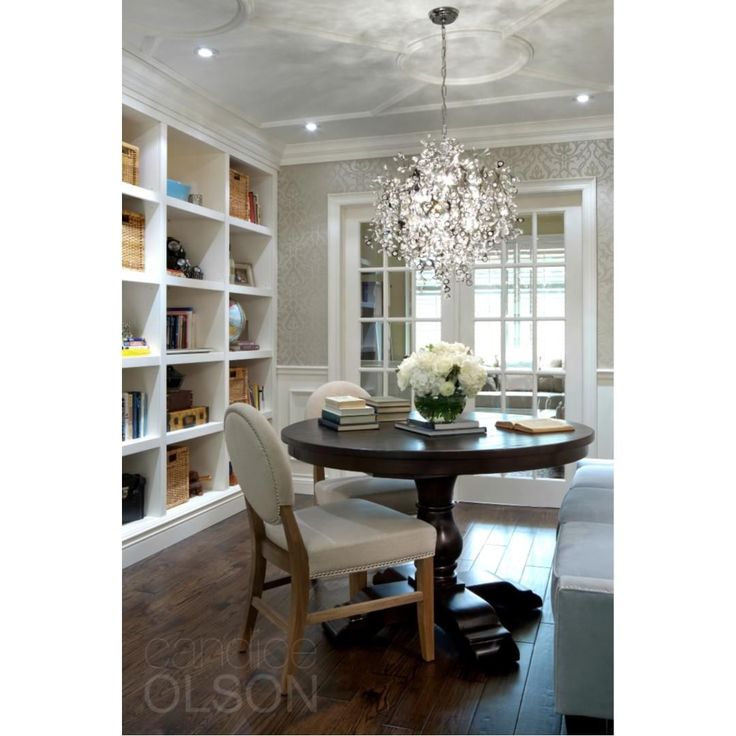 Most likely, for each room it will be different. What is important to understand: which side of the world the windows face, what size they are, how much sun enters the room (and how much of it at all in your climate). Or maybe there is no natural light at all - for example, in the hallway, bathroom or dressing room.
Most likely, for each room it will be different. What is important to understand: which side of the world the windows face, what size they are, how much sun enters the room (and how much of it at all in your climate). Or maybe there is no natural light at all - for example, in the hallway, bathroom or dressing room.
Try to arrange the layout so as not to block the windows and not "cut" the sun's rays. To do this, it is better not to place cabinets and racks perpendicular to the wall, but to replace blank partitions with light semi- or transparent structures. And do not forget about design tricks: use mirrors, a light palette, glossy surfaces, arches, doors with glass inserts, etc.
Social networks of designer Yulia Pisareva
Design: Alesya Kotova. Photo: Evgeny Gnesin. Style: Anastasia Vlasova
Social networks of designer Yulia Pisareva
Design: Alesya Kotova. Photo: Evgeny Gnesin. Style: Anastasia Vlasova
Projection Design social networks
-
Lighting
5 non-obvious tips to help you plan the lighting in your apartment
6.
 Room type
Room type Light scenarios for each room will be different - there is no universal scheme that will suit all rooms. For example, in the cooking area and in the workplace, you will need powerful lamps, and in the bedroom, the illumination should be soft and subdued, setting you up for relaxation. In the bathroom and hallway, the light bulbs should be bright enough and with a maximum color rendering index - there we gather, apply makeup and evaluate our appearance, so the perception of all colors should be clear.
6photo
Design: Olga Lavrova. Photo: Svetlana Okulova. Style: Christina player
Social networks of designer Pavel Alekseeva
Social networks of designer Yulia Pisareva
Social networks of the Projection Design
Social networks of Zhenya Zhdanova
Social networks of designer Yulia Pisareva
7. The appearance of the
Do not forget about decorative.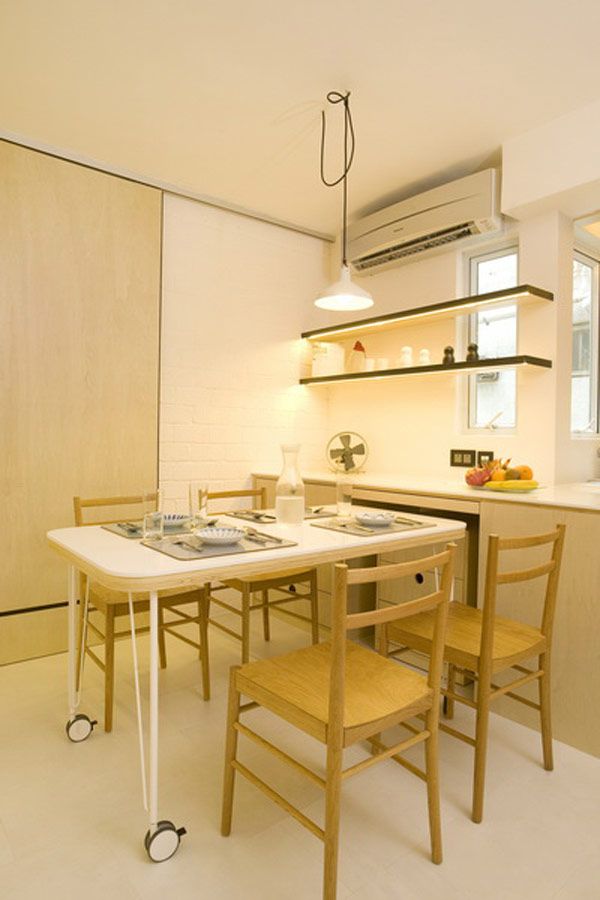 Lighting devices are the same full-fledged elements of the interior as wallpaper on the walls, furniture and decorations. And in some cases, they can even become a central accent or the only decor.
Lighting devices are the same full-fledged elements of the interior as wallpaper on the walls, furniture and decorations. And in some cases, they can even become a central accent or the only decor.
Choose a model depending on the overall style:
- For contemporary and minimalism - all kinds of inconspicuous built-in systems, laconic spots and sconces, hidden LED lighting.
- For classics and neoclassics - graceful sconces, ceiling lamps, table lamps. All soft rounded shapes, with brass and glass elements. If the ceiling height allows, you can hang an accent chandelier.
- For eco and scandi - simple lamps, suitable for both recessed ceiling and pendant. Choose models with paper or wicker lampshades, they look concise, but very atmospheric.
- For loft and industrial - massive pendant lights on cables or chains with metal and glass shades. Accent chandeliers, incandescent lamps, tracks and floor lamps on a hinged base are also suitable. Spotlights look interesting (but this decor is only suitable for spacious rooms).
photo
Social networks of designer Denis Gorshkov
Interior styles
7 trendy interior styles that won't go out of fashion for a long time
Where can I find material announcements and fresh interior ideas? Subscribe to our channels! We publish beautiful collections, videos and reviews:
https://zen.yandex.ru/ivd.ru
https://t.me/ivd_ru
https://vk.com/ivd_ru
Now let's take a closer look at what to consider when planning lighting design, with photos of lighting options for a house and apartment.
Upper
This is the basis of the entire lighting system. The overhead light can consist of one or more sources, depending on the size and shape of the room.
Social networks of designer Zhenya Zhdanova
Most often used as a base:
- Large accent shade or chandelier.
- Luminaire group.
- Spotlights with directional light, which are usually mounted on a rail.
- Spot built-in bulbs.
In large or elongated rooms, spot lighting is a good solution: for example, several spotlights or recessed lights or a powerful LED strip around the entire perimeter of the room. If you want to visually stretch the room upwards, use curtain lighting - it will create the effect of a floating ceiling, and the walls will appear higher. In the center you can hang an accent chandelier or a beautiful ceiling.
Ceiling lights give a uniform and bright enough glow, which is suitable for any active activity. But be careful with the location and design of the lamps: they should not cast too large shadows. A strong contrast will make the space uncomfortable and even gloomy.
9photo
Social networks of designer Alexey Volkov
Design: Anastasia Snitsarenko.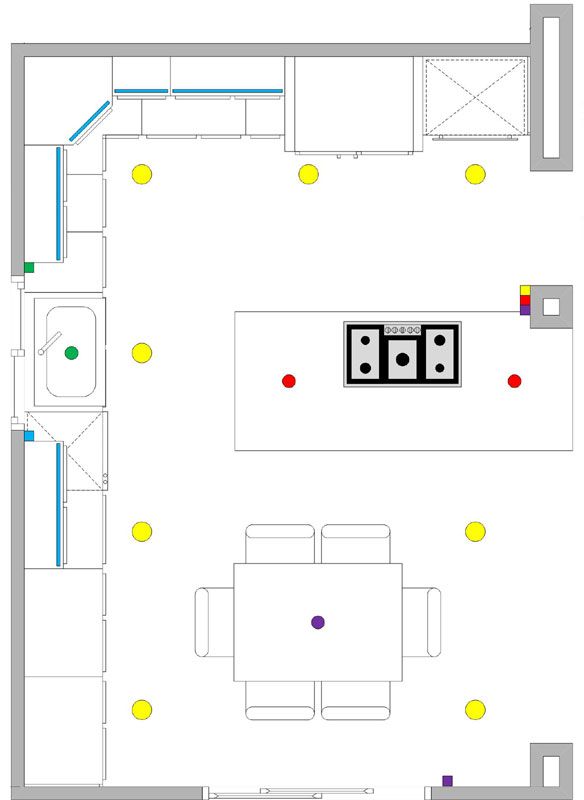 Photo: interphoto.by
Photo: interphoto.by
Social networks of designer Denis Gorshkov
Social networks of designer Alexei Volkov
Design: Alesya Kotova. Photo: Evgeny Gnesin. Style: Anastasia Vlasova
Social networks of designer Denis Gorshkov
Social networks of designer Alexei Volkov
Social networks of Alvhem company
Social networks of designer Zhenya Zhdanova
Local
The next level is additional illumination. It includes all local illumination of functional areas.
Social networks of designer Alexey Volkov
It will be different for each room. For example:
- In the kitchen, the working and dining areas are separately illuminated. Sometimes there may also be a soft group or workplace. Above the tabletop there should be a bright illumination that does not cast shadows from behind. A good option is LED lighting. It is also often used to illuminate cabinets to make it easier to navigate the shelves in search of the right dishes or products.
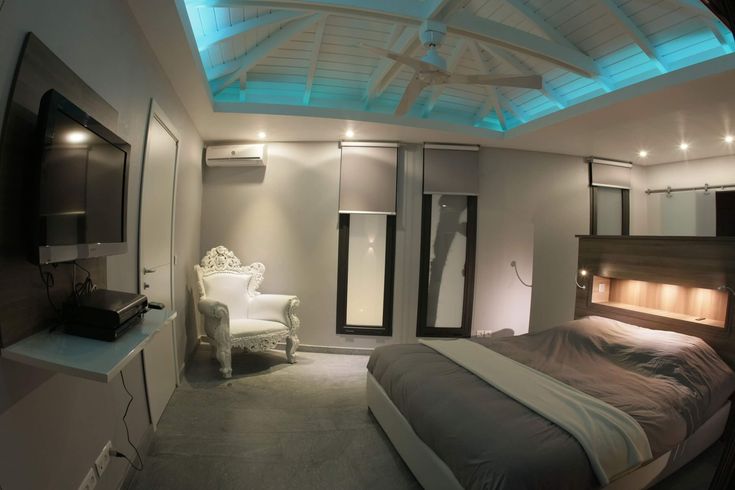 For a dining table or bar counter, a beautiful accent lampshade on suspensions is suitable - or a group of several.
For a dining table or bar counter, a beautiful accent lampshade on suspensions is suitable - or a group of several. - In the living room, illumination of the soft zone and storage systems is useful: walls, cabinets, home library. If there is also a mini-study, dining room or bed, highlight them too. Place a floor lamp with a soft glow next to the sofa or hang a couple of wall sconces - they will give atmospheric illumination and come in handy if, for example, you want to spend an evening reading a book or watching movies - a bright overhead light can give glare to the screen.
- In the bedroom, you definitely need lamps near the bed: to make it convenient to read, lie down with a laptop or phone, look for the necessary items on the nightstand. If you have a dressing room or just a large closet, add a couple of built-in light bulbs or an LED strip to this area - it will become much more comfortable to change clothes and take things apart. Finally, lighting will be needed for the relaxation area, dressing table or work table, if they are in the bedroom.
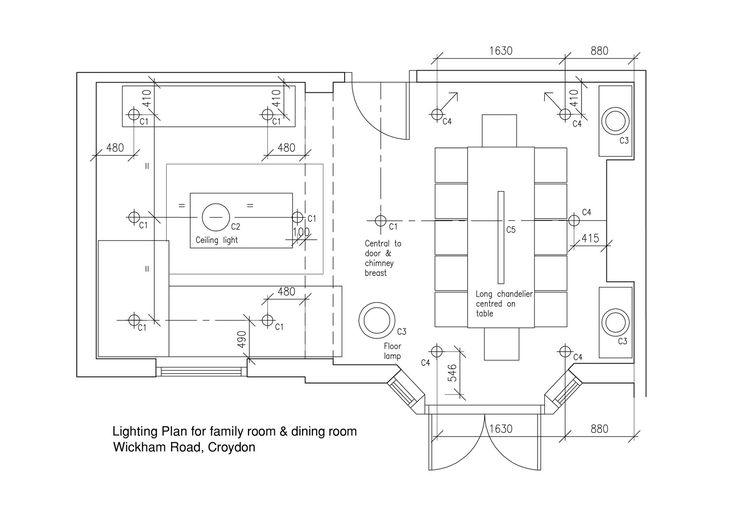
- In the bathroom, it is important to provide good illumination of the mirror so that the face can be seen when applying makeup and during beauty treatments. It can be built-in lighting or, for example, two interesting wall sconces on both sides. Choose light bulbs with a neutral glow: too cold or too yellow tone will give the wrong perception of colors.
- In the hallway it should be convenient to gather and look for the necessary things, so the lamps are usually placed near the mirror and hangers. It is also desirable to highlight the cabinet so that all shelves are clearly visible, including the farthest and topmost ones.
photo
Social networks of designer Alexei Volkova
Social networks of designer Alexei Volkov
Social networks of designer Yulia Pisareva
Social networks of designer Yulia Pisareva
Social networks of designer Alexei Volkova
Socialists of the Pisareva, STODITS STIDICS STECTION
0003
Social networks of designer Alexey Volkov
-
Lighting
7 mistakes that prevent you from choosing a stylish and fashionable lamp
Decorative
Decorative lighting is no less important than top and local lighting - it gives the space a finished look and is used for various design techniques.